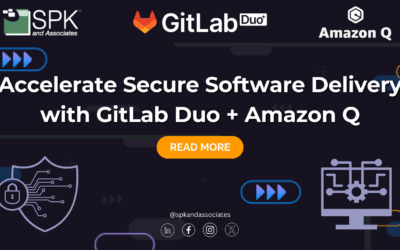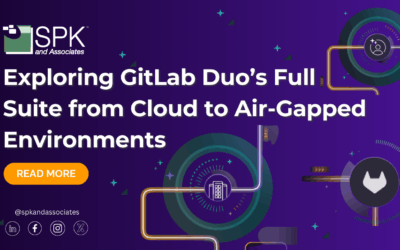For small and medium-sized businesses in the manufacturing industry, hybrid cloud allows for quick and easy integration of what you already have deployed. You also have easier access to new processes, such as the Industrial Internet of Things. This emerging technology field significantly reduces your overall manufacturing costs while increasing efficiency. Listen as SPK’s own, Chris McHale, CEO and Co-Founder, and Mike Solinap, Cloud Practice Manager, discuss the Industrial Internet of Things, hybrid cloud solutions and how emerging technologies can supercharge your business.
Next Steps:
- Read how AWS & Azure can help turbocharge your manufacturing organization.
- Suggest a follow-up topic for Chris and Mike to discuss in their next podcast.
- Subscribe to our blog to stay informed on product development and engineering efficiency topics.
- Schedule a free consultation with a member of the SPK and Associates today.
- Read the podcast transcript below.
Chris: Today we’re going to do our next in our series, and this particular topic is related to cloud security and compliance for small and medium-sized businesses in the manufacturing industry. But in particular, we’re gonna look at how IoT or the Internet of Things also impacts this topic and additional considerations we all may way to think about when we start to think about connected products.
Mike, the first question is why are cloud-based solutions in the cloud, public or hybrid, particularly attractive for the smaller manufacturing enterprise? And kind of a tangential question to that, what does the hybrid cloud offer to the same group that the pure on-premise or pure public cloud solutions might not?
Mike: So, I think as a small business, you have limited resources available to you and your team, so really there’s no need to reinvent the wheel. Small businesses, you know, can easily, quickly leverage services that are already available in the cloud. Both Azure and AWS are constantly coming out with new services and products to make things much more simple. So, using these services and offerings can help you bring your product to market much faster than procuring something either third-party or having to develop it completely from scratch.
Chris: Yeah, I’ve seen this over and over where some of our clients have just been able to streamline so much more quickly using cloud resources or cloud computing instead of just pure on-premise computing.
Mike: That’s right. And in terms of hybrid cloud, that offers the ability for organizations to integrate what they’ve got already in place, you know, in terms of systems and networks. And also it logs onto their existing processes that they’ve already established.
Chris: Yeah, I love the hybrid aspect of things because you can also step into it kind of one step at a time, right? You can, for example, look at some infrastructure, some physical servers and/or networking that might be aging on-prem and say, “Okay, I’m going to look at this specific workload or this set of infrastructure, maybe move that into cloud and integrate it in with what I’ve already got on-prem.”
Mike: Yep, that’s right.
Chris: Are there particular things that somebody should look for in the…let’s use the word “workload” which could be infrastructure or applications, but are there particular things people should look for in workloads that are on-prem that would make them really good candidates to say, “Hey, this one should move into the cloud, you know, I can save costs or make something more quickly.” Are there particular criteria like that that they should be identifying?
Mike: Yeah, in general, or I think as an application that’s very dynamic in terms of, you know, processing load or memory requirements or storage would be great candidates for the cloud, because as you know, on-prem hardware is somewhat static, so if you’ve got an application that’s quite dynamic in terms of its requirements, then that would be a really good candidate to push up to the cloud.
Chris: Okay, great. What are some of the risks that are inherent with public or hybrid cloud solution?
Mike: One interesting thing that we’ve seen with our customers is cost creep, so it becomes very easy to spin up instances, provision more storage, and you know, those costs can quickly get out of hand. So, in order to mitigate that what you want to do is come up with a process from the get-go to attribute, you know, resources that you create on the cloud to perhaps cost center that’s associated to each user or group. That way you can, you know, keep your costs in check and then further you can also make use of the service available out in the cloud to help you alert to the fact that you know, you’ve crossed a certain threshold as far as cost before they do get out of hand.
Chris: Have you helped some our clients with setting up that kind of governance?
Mike: Yeah, actually we have. And you know, they’ve done something as simple as, you know, alert or that type of thing or you can get into something a little bit more elegant where you have a user interface and dashboards which existed in both of those.
Chris: Okay. Here’s a good one. What are some of the biggest mistakes that you’ve seen whether they were our own clients or just out there, and that you’ve seen small manufacturing enterprises make when they’re moving towards public or hybrid cloud solution?
Mike: I think one of the biggest mistakes that, you know, companies face when they move to the cloud is that they’re not using it to its fullest potential. What I mean by that is being able to leverage the cloud and fully automate things. You know, there’s a lot of offerings that both Azure and AWS have in terms of hooks and APIs and being able to get rid of things that you’re doing previously manually. Those things ought to be all automated. That way, you know, you gain some better efficiency on your end.
Chris: And we’ve seen this, I think, even recently with one or two clients where they take that first step and they move some workloads including infrastructure into the cloud so they get the benefit of that flexibility, I suppose, but then they stop before they get to the real kicker which is automating some of their workflows or automating even some of the application development and delivery, right? And that takes a little bit more doing but that’s where you really start to see the benefit in efficiency.
Mike: Yeah, and I think that’s where we can really help customers.
Chris: So, Mike, thanks again for taking some of your valuable time today to talk with us about cloud and hybrid cloud particularly related to the topics of security and compliance. So, we would love to hear from anyone listening with comments or questions that you might have. We’re really happy to help in any way that we can. If you’re interested in more of SPK’s podcasts or papers on this or related topics, head on over to our resources section our website which is spkaa.com and there you’ll find papers and blogs helpful to product development professionals.
We recently published a whitepaper titled “How Hybrid Cloud Can Turbo Charge Your Manufacturing Enterprise” as well as a more recent paper focused on Azure cloud solutions for manufacturing. And hopefully, both of these will be helpful to you. So, please join us again for our next podcast in this series of security and compliance in the cloud. And in the meantime, have a wonderful, safe, and productive week. Thanks.







